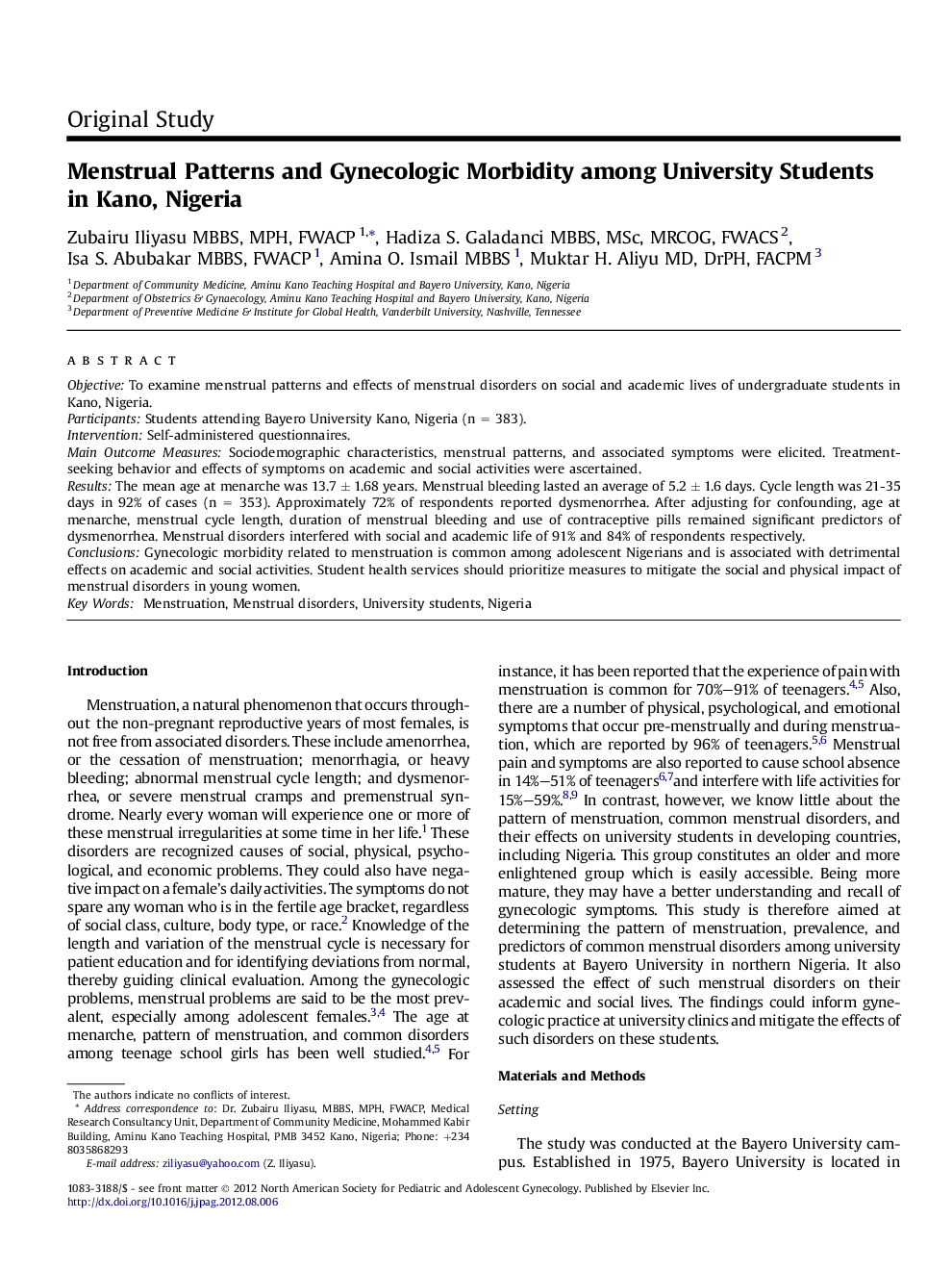| کد مقاله | کد نشریه | سال انتشار | مقاله انگلیسی | نسخه تمام متن |
|---|---|---|---|---|
| 3958933 | 1255432 | 2012 | 6 صفحه PDF | دانلود رایگان |

ObjectiveTo examine menstrual patterns and effects of menstrual disorders on social and academic lives of undergraduate students in Kano, Nigeria.ParticipantsStudents attending Bayero University Kano, Nigeria (n = 383).InterventionSelf-administered questionnaires.Main Outcome MeasuresSociodemographic characteristics, menstrual patterns, and associated symptoms were elicited. Treatment-seeking behavior and effects of symptoms on academic and social activities were ascertained.ResultsThe mean age at menarche was 13.7 ± 1.68 years. Menstrual bleeding lasted an average of 5.2 ± 1.6 days. Cycle length was 21-35 days in 92% of cases (n = 353). Approximately 72% of respondents reported dysmenorrhea. After adjusting for confounding, age at menarche, menstrual cycle length, duration of menstrual bleeding and use of contraceptive pills remained significant predictors of dysmenorrhea. Menstrual disorders interfered with social and academic life of 91% and 84% of respondents respectively.ConclusionsGynecologic morbidity related to menstruation is common among adolescent Nigerians and is associated with detrimental effects on academic and social activities. Student health services should prioritize measures to mitigate the social and physical impact of menstrual disorders in young women.
Journal: Journal of Pediatric and Adolescent Gynecology - Volume 25, Issue 6, December 2012, Pages 401–406